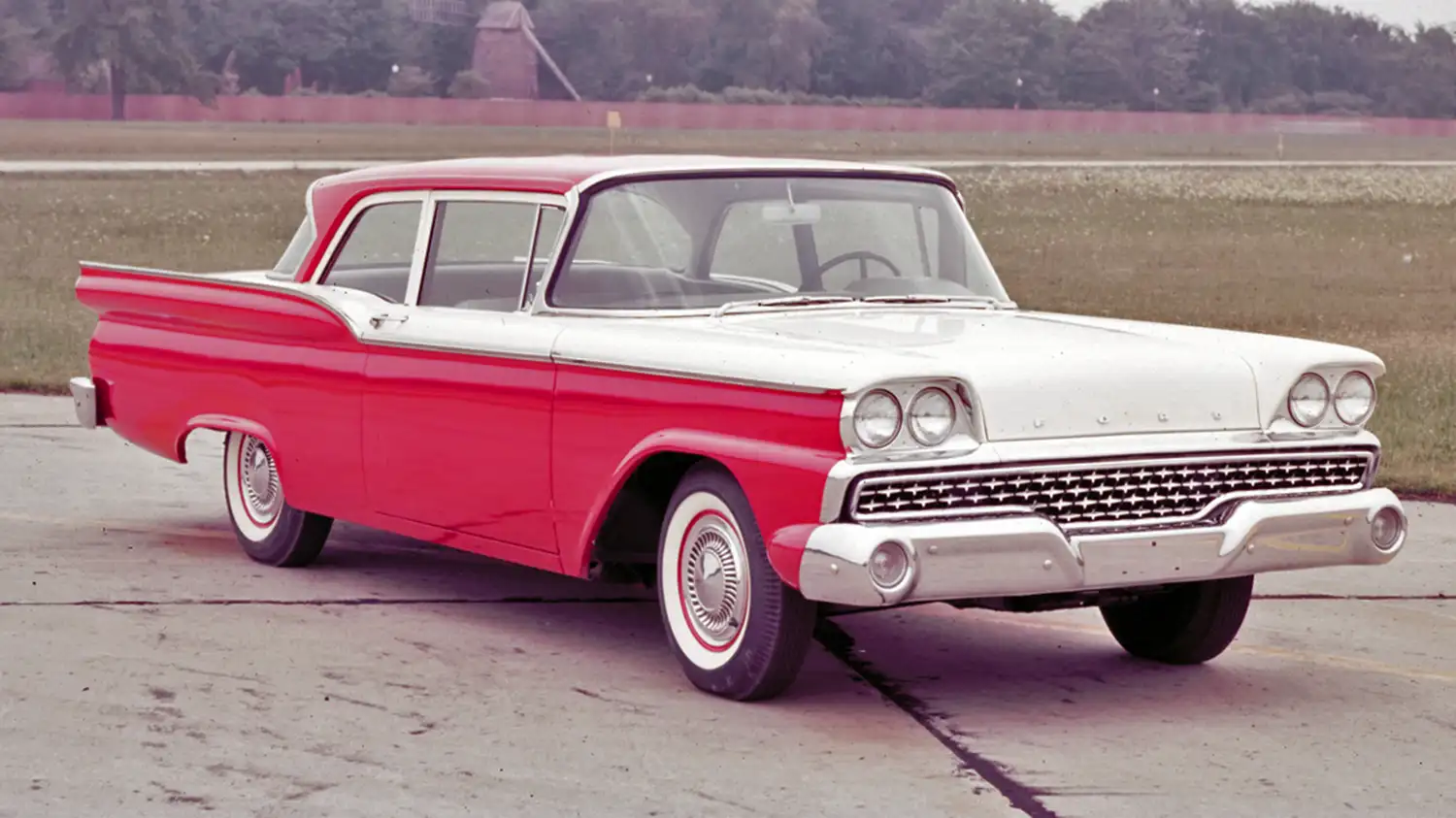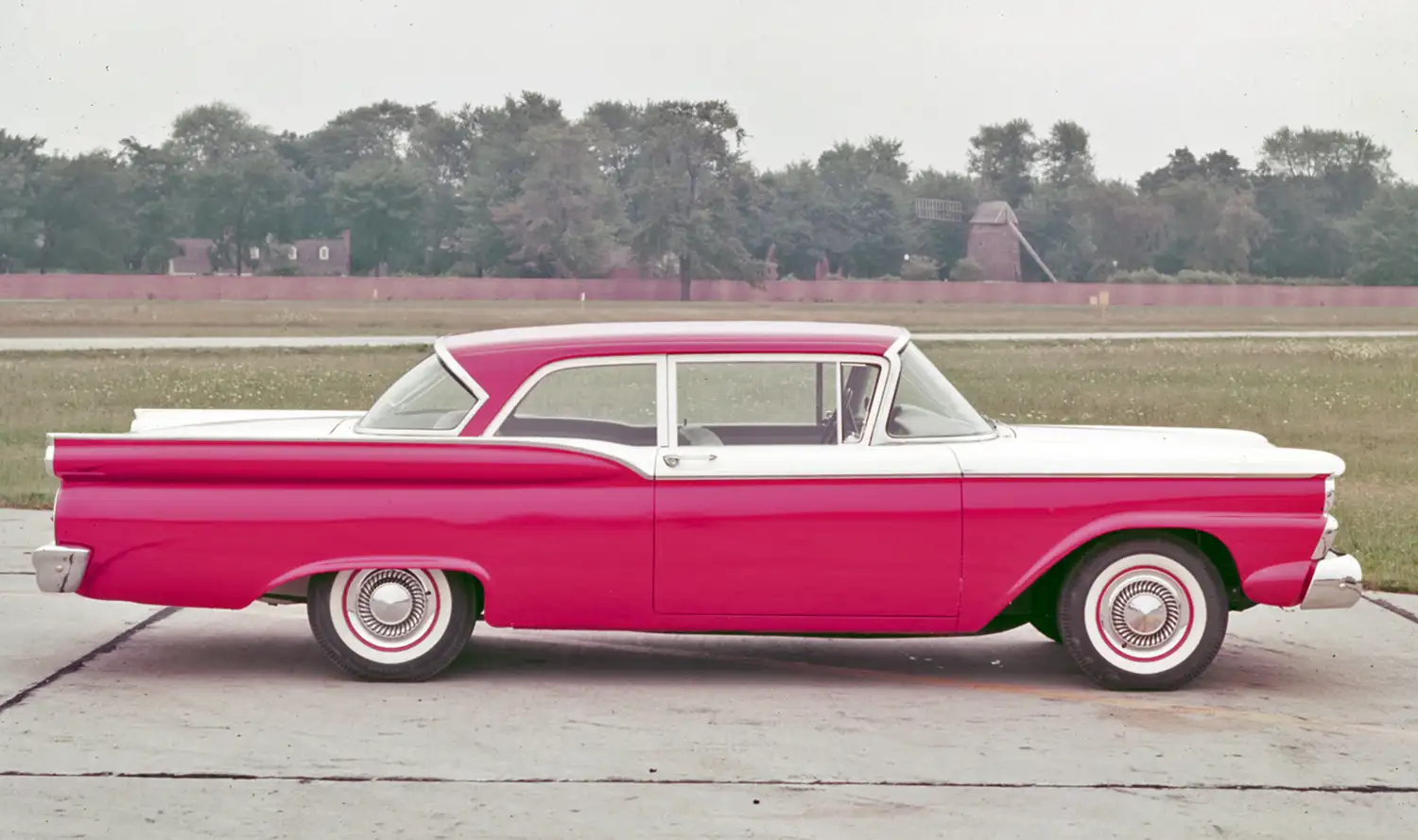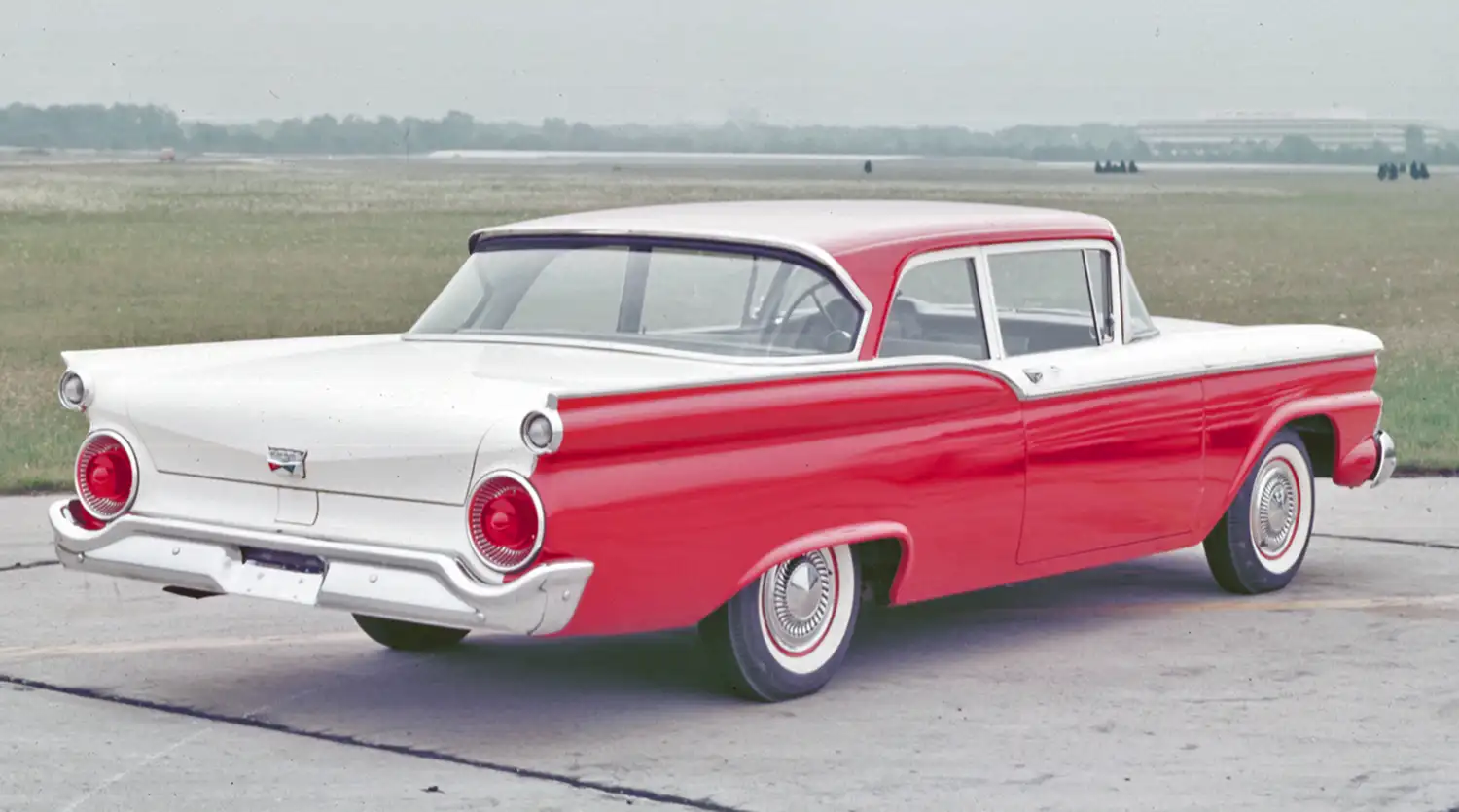
The 1959 Ford Custom 300 Business Sedan stands as a remarkable representation of mid-century American automotive design, balancing practicality with a touch of style. Positioned within Ford’s lineup as a no-nonsense vehicle for the working professional, the Custom 300 Business Sedan offered durability, simplicity, and a clean design, making it a favorite among business owners and fleet operators during the late 1950s.
A Practical Design for the Working Professional
The Ford Custom 300 was introduced as part of Ford’s Custom series, which sat just above the base-level Mainline in the brand’s hierarchy. The Business Sedan variant was specifically designed with the needs of traveling salespeople and small business owners in mind. It omitted the rear seat in favor of a large, flat cargo area, perfect for storing samples, equipment, or other business necessities. This practical interior layout made the Custom 300 Business Sedan an ideal choice for those who needed a reliable and spacious vehicle for work purposes.
Externally, the 1959 Ford Custom 300 featured the bold, forward-looking design language typical of the era. The car’s styling included the signature wide chrome grille, large round headlamps, and modest tailfins that hinted at the space-age optimism of the 1950s. Despite its utilitarian nature, the Custom 300 didn’t sacrifice aesthetic appeal, with its clean lines and restrained use of chrome trim, giving it a refined yet unpretentious look.

Under the Hood: Power and Reliability
The 1959 Custom 300 Business Sedan was powered by a range of engine options that prioritized reliability and ease of maintenance—key factors for business owners who depended on their vehicle for daily operations. The standard engine was a 223 cubic-inch “Mileage Maker” inline-six, producing around 145 horsepower. For those needing a bit more power, Ford offered the 292 cubic-inch “Thunderbird” V8, which delivered a robust 200 horsepower. These engines were mated to either a three-speed manual transmission or Ford’s “Fordomatic” automatic transmission, ensuring a smooth and dependable driving experience.
The sedan’s body-on-frame construction, combined with a well-tuned suspension system, provided a comfortable ride even on the less-than-perfect roads common in rural areas. The car’s durable build quality and straightforward mechanical design made it easy to service, a significant advantage for fleet operators who needed minimal downtime.
A Legacy of Durability and Value
The 1959 Ford Custom 300 Business Sedan may not have been the flashiest car on the road, but it earned a reputation for being one of the most dependable and cost-effective vehicles of its time. It was a favorite among businesses, law enforcement agencies, and government fleets, thanks to its combination of practicality, reliability, and low operating costs.
Today, the Custom 300 Business Sedan is a rare find, with many of the surviving models cherished by collectors who appreciate its historical significance and no-frills approach to automotive design. The simplicity and durability that made the Custom 300 a staple of American roads in the late 1950s now contribute to its status as a classic car that evokes a sense of nostalgia for an era when cars were built to last.
1959 Ford Custom 300 Business Sedan – Specs
- Engine Options:
- 223 cu in inline-six (145 hp)
- 292 cu in V8 (200 hp)
- Transmission:
- 3-speed manual
- Fordomatic automatic
- Body Style:
- 2-door sedan
- Layout:
- RWD (Rear-Wheel Drive)
- Cargo Space:
- Rear seat removed for large cargo area
- Weight:
- Approx. 3,400 lbs (1,542 kg)
- Wheelbase:
- 118 inches (2,997 mm)
The 1959 Ford Custom 300 Business Sedan remains a testament to Ford’s ability to produce a vehicle that met the specific needs of business professionals while embodying the classic design elements of its time. Its legacy endures among collectors and automotive enthusiasts who recognize the value of a car that delivered exactly what it promised: practical, reliable transportation with a touch of mid-century American style.
Source: Ford Heritage Vault
This Article use tools from Chatgpt
